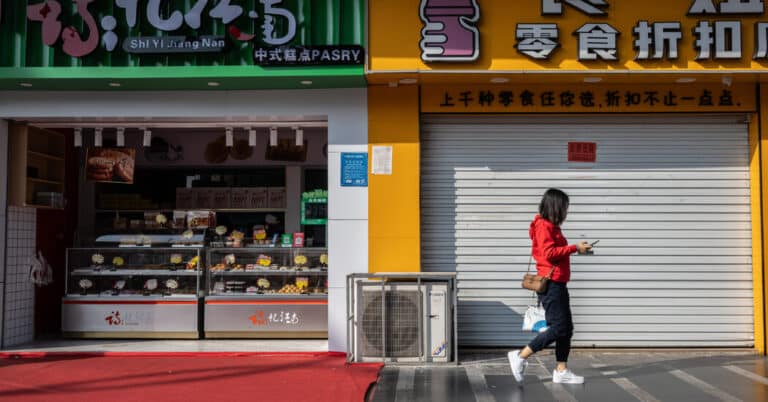Prices are falling again in China after a two-month reprieve, with households and businesses wary of spending even as state-controlled banks pump money into the construction of more factories.
The decline in prices could put China on the cusp of a pernicious economic condition called deflation, in which companies and workers find that they receive less money for their goods or their work, while their debts remain as heavy as ever.
In the United States, by contrast, inflation has been brought down substantially, although consumer prices are still higher than before the pandemic. Europe is still struggling with inflation.
Consumer prices in China dipped 0.2 percent in October compared with a year earlier, the National Bureau of Statistics said on Thursday. Falling food prices played an important role, notably a 30 percent plunge in pork prices as Chinese farmers began raising more pigs.
Changes in food prices can be abrupt and do not necessarily lead to either deflation or inflation, which are changes in the overall price level of an economy. Excluding food prices as well as energy prices — gasoline became slightly more expensive in China last month — consumer prices in October were up 0.6 percent from a year earlier, the statistical agency said.
Gita Gopinath, first deputy managing director of the International Monetary Fund, said at a news conference in Beijing on Tuesday that she thought China would be able to avoid deflation. Weak food and energy prices have pulled down broad measures of inflation but might not persist, she said.
“We don’t expect to see a general deflation trend in China — we expect, in a year from now, inflation to be squarely in the positive territory,” she said.
But falling food prices do not explain a far broader decline in wholesale prices charged by factories and other producers. China’s index of producer prices dropped 2.6 percent in October compared with the same month last year; on that year-on-year basis, it has now been down for 13 consecutive months.
Producer prices were down in October from a year earlier for goods ranging from steel and coal to electric cars, although there have been hints of a stabilization in electric car prices this autumn.
Stocks edged higher in initial trading on Thursday in Shanghai and Shenzhen, even though the drop in consumer prices was slightly deeper than the 0.1 percent decline that economists had expected. Consumer prices were flat in September from a year earlier, up 0.1 percent in August and down 0.3 percent in July.
Economic weakness was visible on a recent weekday in Weifang, a city in Shandong Province in east-central China. A blocks-long street of shops selling construction materials like paint, plaster and flooring was completely empty of customers shortly before lunchtime.
Liu Xinjiang, the owner of a small shop that outfits apartments with new or renovated kitchen stoves and cabinets, said prices for steel and cement had fallen sharply while prices for home decoration supplies were also broadly down. The prices of apartments in the towers overlooking the street have fallen by 30 to 40 percent in the last several years, he said, yet there are still no buyers and, therefore, no one who is spending money on kitchen interiors.
“Apartments can’t sell in China now,” Mr. Liu said.
Falling prices in China are a reflection of weak demand and oversupply for an array of goods. Apartments are the main assets for Chinese families, representing three-fifths to four-fifths of household wealth. The declines in apartment prices have left many people reluctant to spend money.
Prices of existing homes in 100 cities across China have fallen an average of nearly 18 percent since August 2021, according to the Beike Research Institute, a research firm in Tianjin.
China’s strict pandemic restrictions also appear to have had a lasting effect on consumers’ and businesses’ willingness to spend, even though China abruptly abandoned those measures 11 months ago. Consumer confidence plummeted nationwide during Shanghai’s two-month Covid lockdown in the spring of last year, dropping far more than it had during the global financial crisis in 2008 and 2009.
When surveys of consumer confidence failed to show a recovery last spring, the National Bureau of Statistics temporarily stopped releasing the data. But it has now resumed doing so, and the data shows that after a small rebound in the first three months of this year after Covid control measures were lifted, consumer confidence has fallen to levels almost as low as at the end of the Shanghai lockdown.
Li You contributed research.


